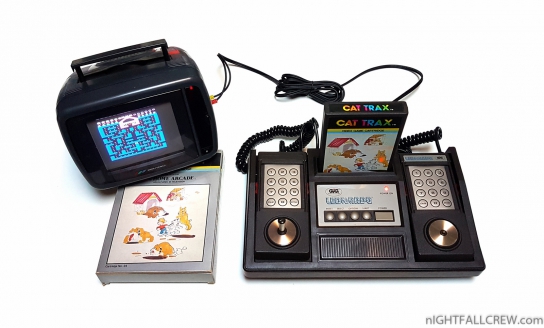
The Leonardo console is nothing more than a italian clone distributed by “Gig” of the console Emerson Arcadia 2001. 35 games have been published under the GIG Leonardo label.
Arcadia 2001 is a second-generation 8-bit console released by Emerson Radio in 1982 following the release of ColecoVision. It was discontinued only 18 months later, with a total of 35 games having been released. Emerson licensed the Arcadia 2001 to Bandai, which released it in Japan. Over 30 Arcadia 2001 clones exist.
The unrelated Arcadia Corporation, manufacturer of the Atari 2600 Supercharger add-on, was sued by Emerson for trademark infringement. Arcadia Corporation then changed its name to Starpath.
The Arcadia is much smaller than its contemporary competitors and is powered by a standard 12-volt or 9-volt power supply so it can be used in a boat or a vehicle. It also has two outputs (or inputs) headphone jacks on the back of the unit, on the far left and far right sides.
The system came with two Intellivision-style controllers with a 12 button keypad and ‘fire’ buttons on the sides. The direction pads have a removable joystick attachment. Most games came with BoPET overlays that could be applied to the controller’s keypads. The console itself had five buttons: power, start, reset, option, and select.
There are at least three different types of cartridge case styles and artwork, with variations on each. Emerson-family cartridges come in two different lengths (short and long) of black plastic cases.
Technical specifications:
- Main Processor: Signetics 2650 CPU (Some variants run a Signetics 2650A)
- RAM: 1 KB
- ROM: —
- Video display: 128 × 208 / 128 × 104, 8 Colours.
- Video display controller: Signetics 2637 UVI @ 3.58 MHz (NTSC), 3.55 MHz (PAL)
- Sound: Single Channel “Beeper” + Single Channel “Noise”
- Hardware Sprites: 4 independent, single color.
- Controllers: 2 × 2 way.
- Keypads: 2 × 12 button (more buttons on some variants)
Gallery:
source: wikipedia
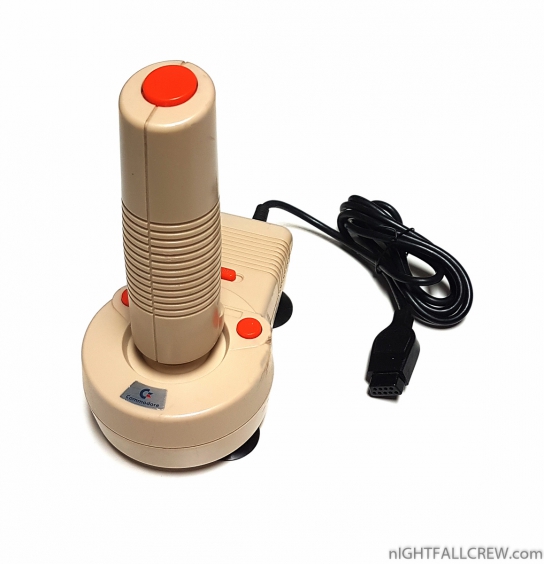
Commodore Joystick CBM 1399.
A lot of joysticks have been produced between the 80′s and 90′s years, this model made by Commodore was missing in my collection.
Gallery:
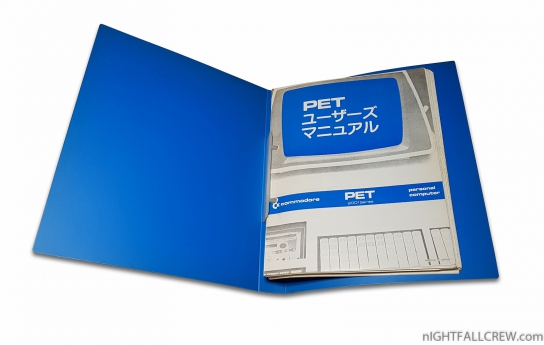
Commodore PET 2001 Japanese Instruction Manual.
I must thank my friend Andry for this great gift.
Gallery:
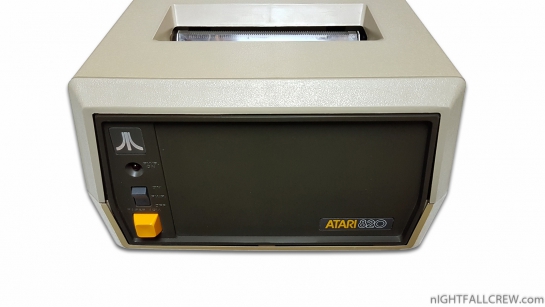
The Atari 820 printer provided Atari 400/800 users with a quick and simple printer. No drivers or special interfaces were needed.
The Atari 820 printer plugged directly onto the Atari SIO bus and allowed users the ability to make 40 column printouts which were good for tracking finances, printing out program listings and other files. The printer made an interesting sound which could only be described as a washing machine.
Gallery:
source: atarimuseum.com
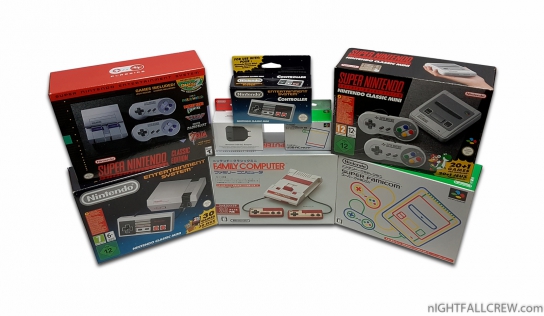
Complete collection of Nintendo Classic Mini & Accessories.
There is not much to say about this photo, i love Nintendo and i wanted all versions of Nintendo Classic Mini.
Gallery:
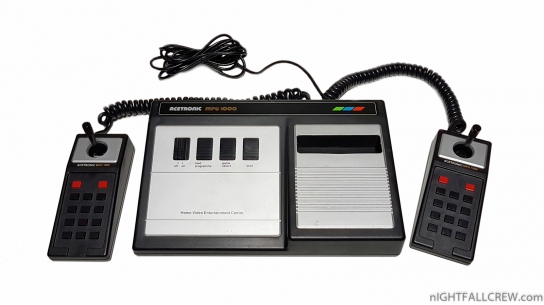
The 1292 Advanced Programmable Video System (Acetronic MPU-1000) is a home video game console released by European company Audiosonic in 1978.
It is part of a group of software-compatible consoles which include the Interton VC-4000 and the Voltmace Database. The 1292 Advanced Programmable Video System included its power pack inside the console instead of an exterior power pack.
Specifications:
- CPU: 8-bit Signetics 2650AI at 4.43 MHz
- Audiovisual co-processor (video chipset, I/O Processor): Signetics 2636N at 3.58 MHz, addressing 32Kb of memory in 8Kb banks. This chipset was less powerful than the later model Signetics 2637N used in the Arcadia 2001.
- Data Memory: 43 bytes.
Graphics:
- Sprites: 4 single colour sprites (1 can be 8 colours)
- 1 Score line displaying 4 BCD digits.
- Background consisting of a series of alternating lines.
Misc:
- The early games cartridges used a 2 KByte ROM, later ones, such as Activision branded ones, up to 8 KBytes
- Very basic arcade machine sound.
User programming:
An expensive (£49 in the UK in 1977) Hobby Module was available which gave 6.5 kb of user-programmable memory and had a 5 pin DIN socket to allow software to be saved to a cassette tape player.
This converted the unit into a halfway house between a home computer and an ordinary gaming console.
The user had to be familiar with programming in Signetics 2650 assembly language and the unconventional ways and register architecture of the Signetics 2650 processor. For example, on many other processors an opcode 0 indicates “no operation” whereas on the 2650 it instructs the processor to Branch To Address In Immediate Register B.
This was a source of many software debugging hassles for budding home programmers.
Gallery:
source: wikipedia
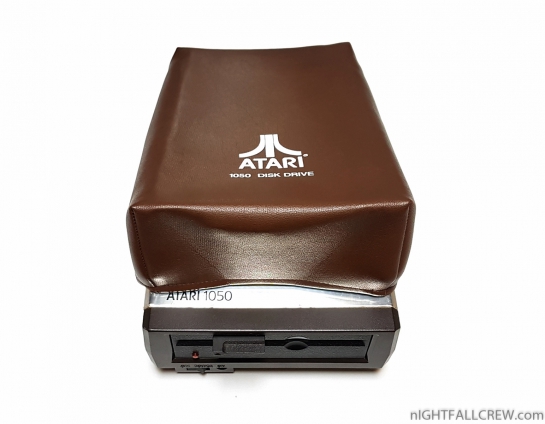
Soft Carry Cover for Atari 1050 Disk Drive.
Gallery:
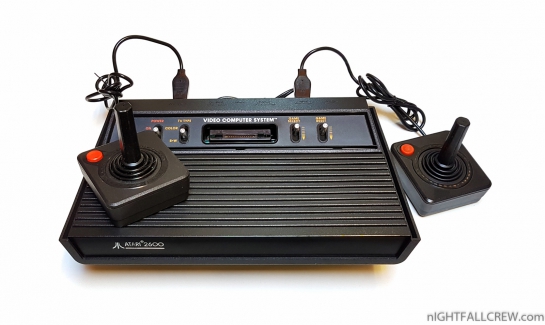
The Atari 2600 (or Atari Video Computer System before November 1982) is a home video game console by Atari, Inc. Released on September 11, 1977, it is credited with popularizing the use of microprocessor-based hardware and ROM cartridges containing game code, a format first used with the Fairchild Channel F video game console in 1976. This format contrasts with the older model of having non-microprocessor dedicated hardware, which could only play the games that were physically built into the unit.
For five years, 1977 until late 1982, the system was officially sold as the Atari VCS, an abbreviation for Video Computer System. Following the release of the Atari 5200 in November 1982, the VCS was renamed to the “Atari 2600″, after the unit’s Atari part number, CX2600. The 2600 was typically bundled with two joystick controllers, a conjoined pair of paddle controllers, and a game cartridge: initially Combat, and later Pac-Man.
Gallery:
source: wikipedia
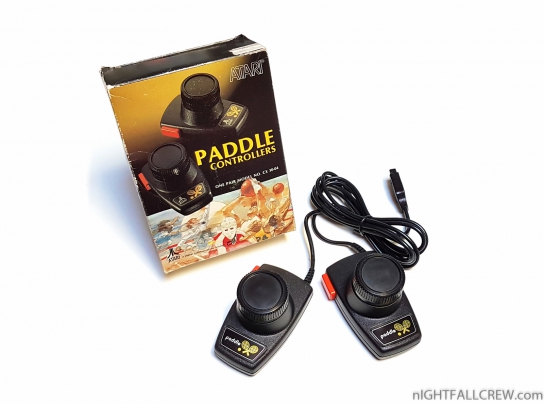
A paddle is a game controller with a round wheel and one or more fire buttons, where the wheel is typically used to control movement of the player object along one axis of the video screen.
A paddle controller rotates through a fixed arc (usually about 330 degrees); it has a stop at each end.
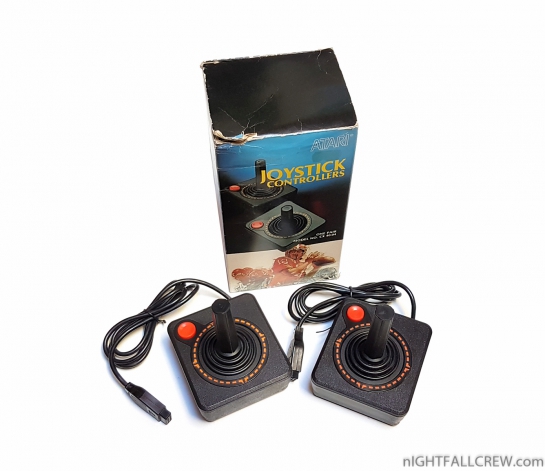
The Atari CX40 joystick was the first widely used cross-platform game controller. The original CX10 appeared on the Atari 2600 in 1977, and was considered such a great advance over other controllers that it became the primary input device for most games on the platform. The CX10 was replaced after a year by the much simpler and less expensive CX40. The addition of the Atari joystick port to other platforms cemented its popularity, and millions were produced and used on almost every game console and home computer of the era.
The CX40 was so popular during its run that it became as iconic for Atari as its “Fuji” it remains a common staple in video game iconography to this day, and is commonly referred to as the symbol of 1980s video game system design. The CX40 has been called “the pinnacle of home entertainment controllers in its day”, and remains a staple of industrial design discussions.
source: wikipedia
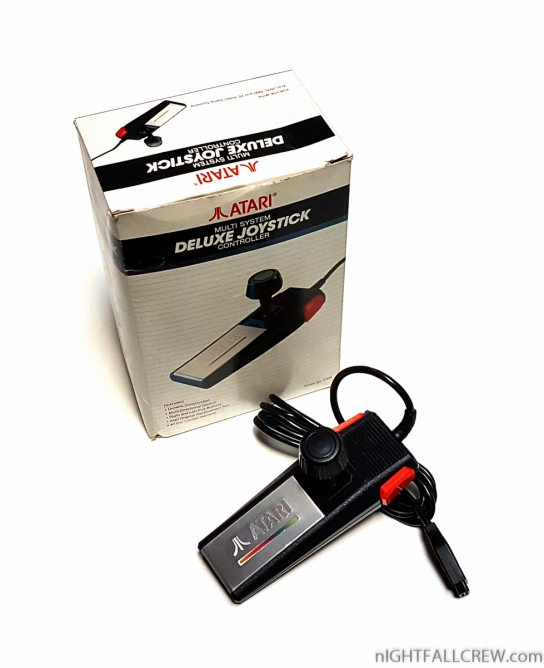
Of all of the Joysticks Atari ever made over the years they were in business, our two least favorite Atari controllers were the 7800 CX24 Slim line Deluxe Joystick (sometimes called the Atari Proline Joystick) and the ill fated Atari Space Age Joystick, which had an internal flex circuit problem from the start and caused it to be dropped by Atari very fast. Now Atari Space Age Joysticks are a very rare Atari collector item.
The main reason why the Atari CX24 dual fire button Joystick was not one of our favorite Atari controllers made, was the left, right fire button PCB’s and Main X / Y PCB would fail very fast. 1st the left and right fire buttons PCBs would fail and second the main X / Y PCB would fail next with any kind of normal use.
You can read more about this joystick here
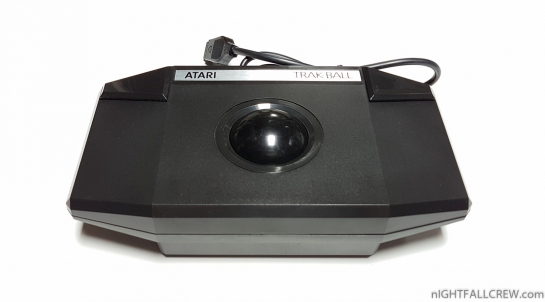
The Atari Trak-Ball is a pointing/movement device consisting of a ball held by a socket containing sensors to detect a rotation of the ball about two axis-like an upside-down mouse with an exposed protruding ball. The user rolls the ball with the palm of the hand while using the fingertips to press the two large buttons.
The Atari Track-Ball is mainly used with games like Centipede, Missile Command, Crystal Castle, etc.
Gallery:
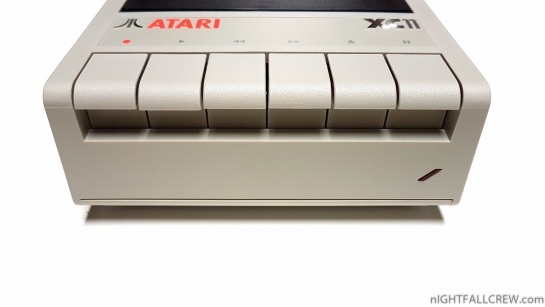
The Atari Tape Recorder Model XC11 can save or load programs/data from magnetic media (audio cassette).
The transfer rate is 600bits per second, so you can record about 100,000 bytes of data on a regular 60 minute cassette.
Unlike the new XC12 model in the XC11 we find the SIO pass through connector so this device can be connected anywhere in the SIO chain.
The power is supplied from the I/O Serial cable (SIO).
Gallery:
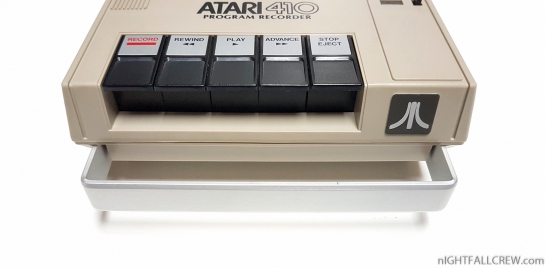
I did not find much information about this specific Atari Tape Recorder Model 410, probably is one of the first models that have been produced for the Atari 400/800 series and does not have the SIO passtrough to connect other external peripherals.
General informations:
The Program Recorder was well built and study with built in power supply and SIO cable, the 410 didn’t need a bukly external power pak like most other Atari 400/800 components, how the SIO cable being built in and the Program Recorder having no daisy chain port on the unit meant that it had to be placed at the end of the SIO chain.
The original idea of the SIO (Serial I/O) port on the Atari computers was that it was to be used only for the Data cassette drive, however its functionality was extended so that it could use all Atari peripherals including disk drives, printers and modem.
The Atari 410/410a had a unique feature exclusively used by Atari. They could play two seperate tracks on a tape, this proved very useful for interactive programs where a user would run a program and would hear audio music/speech while the other track would load the next part of the program.
Gallery:
source: atarimuseum.com
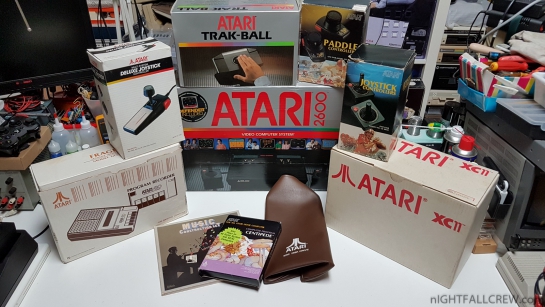
Some interesting things to close my personal Atari collection.
Description:
- Atari Program Recorder Model 410 (early model)
- Atari Program Recorder Model XC11.
- Atari 2600 Dark Vader Defender Pack.
- Atari Joystick CX-40-04 Retail Box.
- Atari Paddle Controllers CX 30-04 Retail Box.
- Atari Multi System Deluxe Joystick Controller CX24.
- Atari Centipede (Atari)
- Atari Trak-Ball CX-80.
- Music Construction Set (Electronic Arts)
- Atari 1050 Disk Drive Soft Cover.











































































Recent Comments